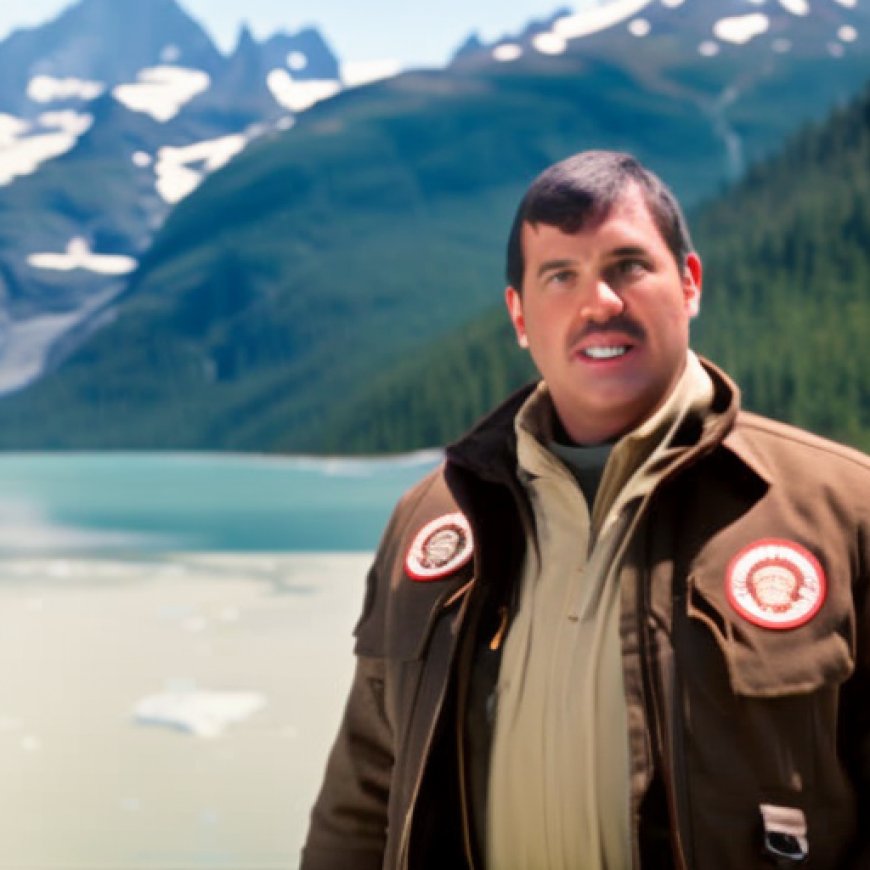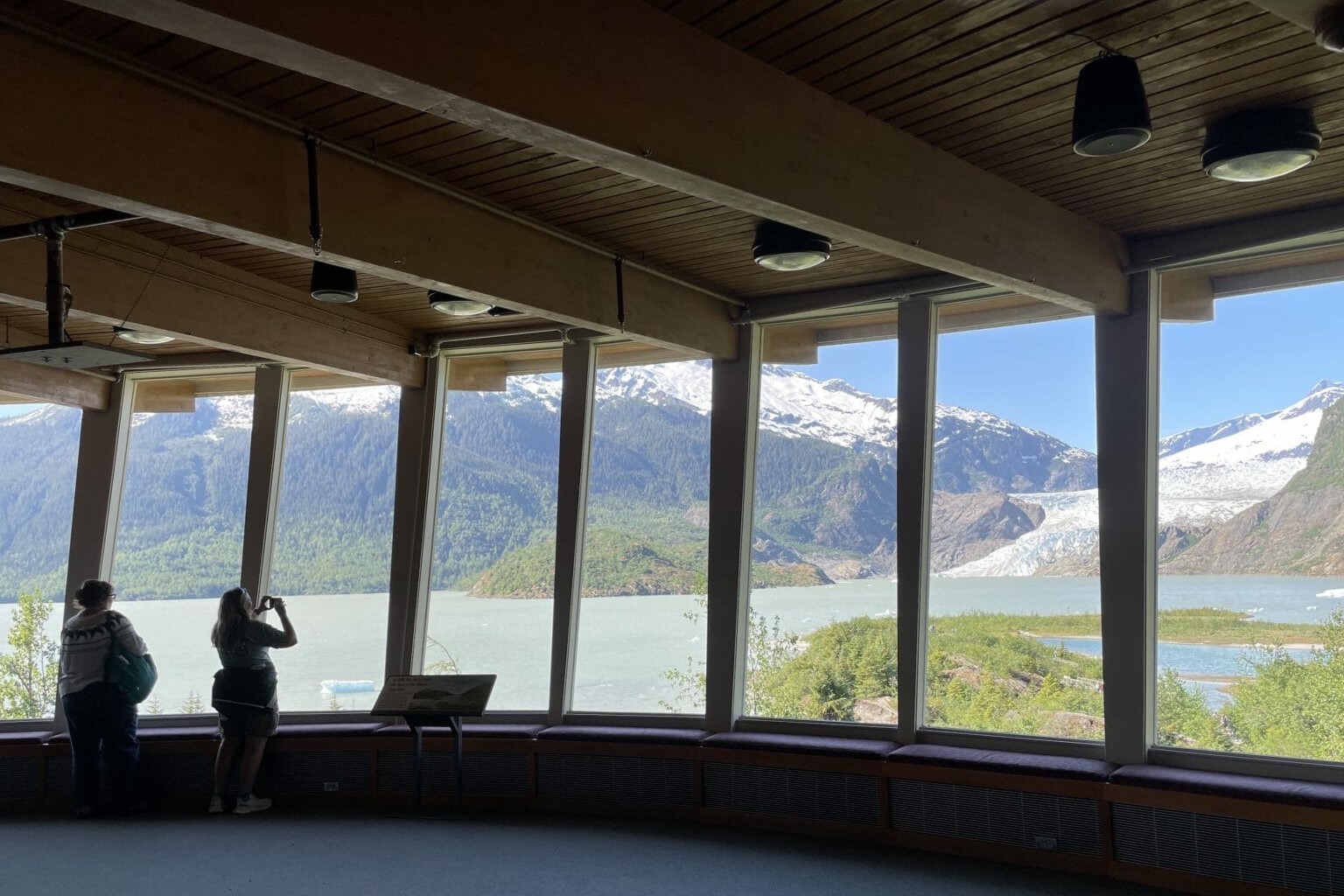Tlingit and Haida, Forest Service plans to expand cultural education at Mendenhall Glacier
Tlingit and Haida, Forest Service plans to expand cultural education ... Alaska Public Media News


Collaboration between Tlingit and Haida Tribes and U.S. Forest Service to Manage Mendenhall Glacier Recreation Area

Introduction
The Central Council of the Tlingit and Haida Indian Tribes of Alaska and the U.S. Forest Service have entered into a collaboration to manage the Mendenhall Glacier Recreation Area. The partnership aims to enhance visitor education on Alaska Native culture and aligns with the Sustainable Development Goals (SDGs).
Enhancing Cultural Education
Tlingit and Haida President Richard Chalyee Éesh Peterson expressed excitement about sharing more cultural history with the nearly one million tourists who visit the Mendenhall Glacier Visitor Center annually. The Tribe recognizes the visitors’ interest in learning about both the glacier and the people. The Lingít culture has a rich heritage of songs, stories, and history related to migrating over, under, and through the glaciers.
Mutual Commitment
The Forest Service and Tlingit & Haida signed a memorandum of understanding (MoU) to solidify their commitment to collaborating on resource management and planning in the recreation area. This partnership aligns with SDG 17: Partnerships for the Goals, emphasizing the importance of cooperation between different stakeholders.
Representation and Sovereignty
The agreement builds on the Forest Service’s dedication to strengthening federal and tribal cooperation in the region. Kevin Hood, the regional tribal relations programs manager for the Forest Service, highlights the need for better representation of the Alaskan Native perspective. Recognizing the sovereign status of Tribal nations, this collaboration upholds the nation-to-nation relationship between the Forest Service and the Tlingit and Haida Tribes.
Expanding Lingít Culture
The immediate focus at the glacier will be to incorporate more Lingít culture, history, and language into the recreation area’s programming. This may involve updating signs and displays on trails and in the visitor center. Additionally, the MoU opens avenues for collaboration on trail maintenance, watershed restoration, and conservation of fish and wildlife in the area, aligning with SDG 15: Life on Land.
Employment Opportunities
As part of the agreement, the Forest Service will hire Tribal citizens to work as educators and guides. This initiative not only promotes cultural exchange but also provides employment opportunities for the local community, contributing to SDG 8: Decent Work and Economic Growth.
Conclusion
The collaboration between the Tlingit and Haida Tribes and the U.S. Forest Service in managing the Mendenhall Glacier Recreation Area demonstrates a commitment to sustainable development and the SDGs. By incorporating cultural education, fostering partnerships, and supporting local employment, this initiative contributes to the overall well-being of the region and its communities.
SDGs, Targets, and Indicators
| SDGs | Targets | Indicators |
|---|---|---|
| SDG 4: Quality Education | Target 4.7: By 2030, ensure that all learners acquire the knowledge and skills needed to promote sustainable development, including among others through education for sustainable development and sustainable lifestyles | No specific indicators mentioned in the article |
| SDG 11: Sustainable Cities and Communities | Target 11.4: Strengthen efforts to protect and safeguard the world’s cultural and natural heritage | No specific indicators mentioned in the article |
| SDG 15: Life on Land | Target 15.1: By 2020, ensure the conservation, restoration, and sustainable use of terrestrial and inland freshwater ecosystems and their services, in particular forests, wetlands, mountains, and drylands, in line with obligations under international agreements | No specific indicators mentioned in the article |
1. Which SDGs are addressed or connected to the issues highlighted in the article?
The issues highlighted in the article are connected to SDG 4: Quality Education, SDG 11: Sustainable Cities and Communities, and SDG 15: Life on Land.
2. What specific targets under those SDGs can be identified based on the article’s content?
Based on the article’s content, the specific targets that can be identified are:
- Target 4.7: By 2030, ensure that all learners acquire the knowledge and skills needed to promote sustainable development, including among others through education for sustainable development and sustainable lifestyles
- Target 11.4: Strengthen efforts to protect and safeguard the world’s cultural and natural heritage
- Target 15.1: By 2020, ensure the conservation, restoration, and sustainable use of terrestrial and inland freshwater ecosystems and their services, in particular forests, wetlands, mountains, and drylands, in line with obligations under international agreements
3. Are there any indicators mentioned or implied in the article that can be used to measure progress towards the identified targets?
No specific indicators are mentioned or implied in the article that can be used to measure progress towards the identified targets.
4. SDGs, Targets, and Indicators
| SDGs | Targets | Indicators |
|---|---|---|
| SDG 4: Quality Education | Target 4.7: By 2030, ensure that all learners acquire the knowledge and skills needed to promote sustainable development, including among others through education for sustainable development and sustainable lifestyles | No specific indicators mentioned in the article |
| SDG 11: Sustainable Cities and Communities | Target 11.4: Strengthen efforts to protect and safeguard the world’s cultural and natural heritage | No specific indicators mentioned in the article |
| SDG 15: Life on Land | Target 15.1: By 2020, ensure the conservation, restoration, and sustainable use of terrestrial and inland freshwater ecosystems and their services, in particular forests, wetlands, mountains, and drylands, in line with obligations under international agreements | No specific indicators mentioned in the article |
Behold! This splendid article springs forth from the wellspring of knowledge, shaped by a wondrous proprietary AI technology that delved into a vast ocean of data, illuminating the path towards the Sustainable Development Goals. Remember that all rights are reserved by SDG Investors LLC, empowering us to champion progress together.
Source: alaskapublic.org

Join us, as fellow seekers of change, on a transformative journey at https://sdgtalks.ai/welcome, where you can become a member and actively contribute to shaping a brighter future.







